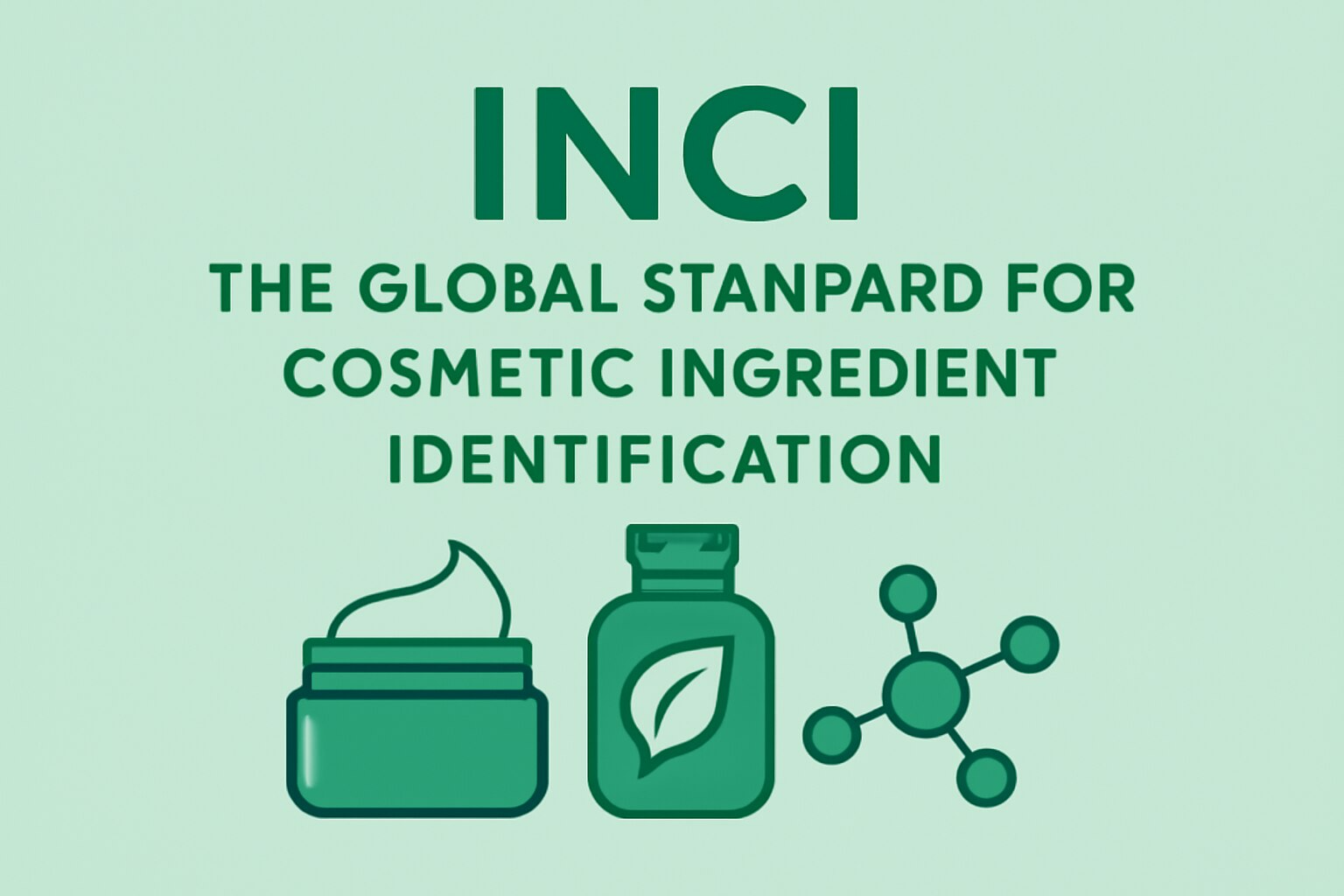Blog Details

INCI: The Global Standard for Cosmetic Ingredient Identification
The International Nomenclature of Cosmetic Ingredients (INCI) is the standardized global system for identifying cosmetic components. This nomenclature provides a uniform framework that enables manufacturers, regulators, and consumers to accurately identify ingredients across international markets. It enhances transparency, facilitates regulatory adherence, and supports informed consumer decision-making. INCI labeling is mandated in major markets including the European Union, United States, Canada, and Japan, ensuring consistent identification regardless of the product's country of sale.
Historical Development of the INCI Standard
- 1973: Established in the United States by the Cosmetic, Toiletry, and Fragrance Association (now the Personal Care Products Council - PCPC).
- 1990s: Formally adopted by the European Union under the Cosmetics Directive, with current governance under Regulation (EC) No 1223/2009.
- Present: Recognized as the undisputed global standard, encompassing over 25,000 ingredient nomenclature entries within the International Cosmetic Ingredient Dictionary and Handbook.
Process for Obtaining an INCI Designation
The Personal Care Products Council (PCPC) administers the process for establishing new INCI names to ensure scientific accuracy and global consistency. The procedure involves several key stages, as outlined below.
Table 1: Overview of the INCI Designation Process
Stage | Key Actions & Requirements | Typical Timeline |
1. Data Compilation | Applicant gathers comprehensive data including: | Varies by applicant |
2. Application Submission | Completed application is formally submitted via the PCPC online portal along with the requisite fees. | 1-2 weeks |
3. Committee Review | The INCI Committee evaluates the submission based on: | 2-4 months |
4. Publication | Accepted names are published in the International Cosmetic Ingredient Dictionary and integrated into regulatory databases (e.g., EU CosIng). | 1-2 months |
The complete process typically requires three to six months from submission to official designation.
Ingredient Safety Assessment: The Role of the Cosmetic Ingredient Review (CIR)
While the INCI system identifies what an ingredient is, the Cosmetic Ingredient Review (CIR) is responsible for evaluating its safety. Established in 1976 as an independent, expert panel, the CIR assesses scientific data to determine if ingredients are safe for use in cosmetics under specified conditions.
The CIR's rigorous assessment process involves a panel of independent scientists (toxicologists, dermatologists, and chemists) who review all available data and issue public safety conclusions.
Table 2: CIR Safety Determination Categories
Determination | Definition |
Safe | The ingredient is safe for use in cosmetics as currently practiced. |
Safe with Qualifications | The ingredient is safe for use, but within specific concentration limits or under certain conditions. |
Unsafe | The ingredient is not safe for use in cosmetic products. |
Insufficient Data | The available data are insufficient to make a determination of safety. |
These findings, though not legally binding, are highly influential to regulators and manufacturers worldwide, providing a critical layer of consumer protection.
Key Regulatory and Information Resources
Table 3: Authoritative Cosmetic Ingredient Databases
Resource | Primary Function | Access |
PCPC INCI Application Portal | Official platform for submitting applications for new INCI names. | PCPC Members |
EU CosIng Database | Search for INCI names, functions, and regulatory status in the European Union. | Publicly Accessible |
Health Canada Hotlist | Identifies cosmetic ingredients that are restricted or prohibited for use in Canada. | Publicly Accessible |
Cosmetic Ingredient Review (CIR) | Access detailed safety assessments and final reports for evaluated ingredients. | Publicly Accessible |

 Twitter
Twitter
